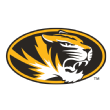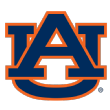There are no sure things in the NFL draft, but quarterback might be the riskiest position of all. No defense revolves around a single player the way every offense revolves around the quarterback. Trust your offense to the wrong young quarterback, and your team isn't going to climb back into playoff contention. Recent history is littered with teams that drafted a quarterback high, only to find out that player couldn't play at the NFL level.
The lessons of history can help us figure out how much of a risk each quarterback prospect will be. That's the point of Football Outsiders' quarterback-adjusted-stats-and-experience (QBASE) projection system. It looks at college performance, experience and expected draft position (to incorporate scouting information that college stats will miss). To allow some time for development, QBASE projects a quarterback's efficiency (passing only) in Years 3-5 of his career, according to Football Outsiders' defense-adjusted yards above replacement (DYAR) metric. Fifty thousand simulations produce a range of potential outcomes for each prospect, with players drafted later generally having a larger range of possibilities.
Skip ahead to each QB: Haskins | Murray | Lock
Finley | Stidham | Jones | Grier
QBASE favors quarterbacks expected to go high in the draft who have a relatively long résumé of college success, according to the stats. Those stats include completion percentage, adjusted yards per attempt (adjusted for touchdowns and interceptions) and team passing efficiency (measured with Bill Connelly's passing S&P+ stats). These numbers are adjusted both for the quality of the defenses faced as well as the quality of a quarterback's offensive teammates. QBASE is meant to be used only on players chosen in the top 100 picks; after that, the judgment of scouts becomes even more important, and statistics become even less predictive.
However, there's a bit of a problem with using our QBASE system to analyze this year's prospects. As noted, one of the strongest elements in QBASE is the quarterback's résumé: how many years has he started in college. Over the past 20 years, most of the quarterbacks taken at the top of the draft who then developed into NFL stars were quarterbacks who started at least three years in college, and often four.
Former Oklahoma quarterback Kyler Murray might be shorter than NFL scouts would like, but his instincts and athletic ability more than make up for it.
But the top two quarterback prospects of the 2019 draft, Kyler Murray and Dwayne Haskins, both have a measly one year of starting experience in college. It's not just rare for a quarterback with only one year of starting experience to become a successful starter in the NFL, but it is rare for a quarterback with only one year of starting experience to get drafted in the first three rounds.
Here's the list of quarterbacks with only one year of starting experience to be drafted in the top 100 picks since 1997: Mark Sanchez, Brock Osweiler, Mitchell Trubisky and Cam Newton, if you don't count the year Newton spent starting in junior college. That's it.
Expand the list of quarterback prospects to those with two years of starting experience, and this group of passers still has a lousy track record. The best of the two-year starters are Joe Flacco, Michael Vick and Alex Smith. The jury is still out on players such as Carson Wentz and Deshaun Watson. Aaron Rodgers could count as either a two-year or three-year starter since, like Newton, he also started a year in junior college. But for the most part, highly drafted quarterbacks with only two years of college starting experience have underperformed their draft position. These are some of the biggest busts in quarterback history: JaMarcus Russell, Ryan Leaf, Akili Smith, Blake Bortles and so forth.
Obviously, these quarterback prospects are not necessarily to blame for their lack of starting experience. Murray had to sit behind Baker Mayfield, a Heisman winner who had one of the five highest projections in QBASE history. And the experience issue is exacerbated by the number of quarterbacks in this year's draft who transferred midway through their college careers.
Murray transferred from Texas A&M to Oklahoma. Will Grier went from Florida to West Virginia. Ryan Finley began at Boise State before starting three years at North Carolina State. Jarrett Stidham left Baylor and finished his college career at Auburn. Whether it was because of injury, job-sharing or losing the competition to be a starter, all of these quarterbacks missed out on getting the early playing time that QBASE feels is a prerequisite for top prospects.
It seems like quarterbacks are coming out with less starting experience in recent years, but that's not really true. There are still plenty of top prospects who started three or four years in college: Patrick Mahomes, Mayfield, Lamar Jackson or this year's Drew Lock. Will recent top prospects with less college experience do better than similar prospects of a decade ago? We'll need to see more out of them before we can answer that question. Until we do, QBASE will remain a little bit skeptical of quarterbacks with less starting experience.
Despite the lack of experience, Murray and Haskins (in that order) have the highest QBASE projections in this year's class. But they don't match the top QBASE projections of recent years. This is the first draft since 2014 in which no quarterback has a QBASE projection over 600. We'll study the QBASE projections for Haskins, Murray and the five other quarterbacks currently in the top 100 of the Scouts Inc. rankings for the 2019 draft.

Dwayne Haskins, Ohio State Buckeyes
Scouts Inc. ranking for Haskins: No. 8

Kyler Murray, Oklahoma Sooners
Scouts Inc. ranking for Murray: No. 9
There's another reason why the projections aren't higher for Haskins and Murray: both of them played alongside a lot of draft-worthy teammates who might have boosted their games. We add up the draft value of receivers, tight ends and offensive linemen based on projected draft position for the next two drafts. Since 1997, the only top-100 drafted quarterbacks with a stronger collection of teammates based on this formula were Johnny Manziel (2014), Matt Leinart (2006) and Danny Wuerffel (1997).
Haskins will probably have two receivers go on Day 2 this year (Parris Campbell and Terry McLaurin) plus two offensive linemen on Day 3 (Michael Jordan and Isaiah Prince). He also had blocking from one of the top projected offensive linemen of the 2020 draft, Thayer Munford. Meanwhile, Oklahoma's offense might have three first-rounders this year, with Murray joined by tackle Cody Ford and receiver Marquise Brown. And wide receiver CeeDee Lamb and tight end Grant Calcaterra should go in the first two rounds of the 2020 draft.
Despite the lack of experience, and the small penalty for playing in good situations, both Haskins and Murray had outstanding production, which puts them among the top QBASE projections ever for players with less than three years of starting experience. Haskins ranked fourth in FBS in all three of the stats that QBASE uses to measure production. Murray was even better; he broke Baker Mayfield's record with 13.0 adjusted passing yards per attempt. Here's a look at the top QBASE projections since 1997 for players with less than three years of college starting experience.
One other issue that's important for discussing Murray, although not Haskins: QBASE only gives a projection for passing performance in the NFL, not a projection for rushing value. That's going to be a big additional part of what Murray brings to an NFL offense.

Drew Lock, Missouri Tigers
Scouts Inc. ranking: No. 17
Lock is the only four-year starter among this year's top prospects, but QBASE does not give him credit for being a four-year starter. The system doesn't want to give extra credit to quarterbacks who had bad years as starters, so there's a minimum floor of completion rate to have a season counted: 55 percent. Lock fell below this baseline in both his freshman (49.0 percent) and sophomore (54.6 percent) seasons.
Lock's senior stats in the three statistical categories measured by QBASE are almost exactly the average for all QB prospects from the past 20 years. Each one -- AYPA, completion rate, and team passing S&P+ -- is within 0.1 standard deviations of the mean.
Lock's profile in QBASE looks a lot like another four-year starter from more than a decade ago who disappointed at the pro level: Brady Quinn. Quinn also fell short of the 55 percent completion rate baseline in his first two seasons, had senior stats that were very close to the average for all prospects, and was projected as a late first-round pick. Quinn's QBASE was a little lower, with a projection of 137 DYAR over years 3-5.
Kyler Murray and Dwayne Haskins have grabbed a lot of headlines leading into the NFL draft. But don't overlook Missouri's Drew Lock.

Ryan Finley, NC State Wolfpack
Scouts Inc. ranking: No. 54
Finley's odd college career impacts his standing as a prospect in a couple of ways. Finley spent three years at Boise State, with two medical redshirts in his first three seasons. He also graduated in just three years, which made him a graduate transfer who didn't have to sit out a season before playing for NC State. The NCAA granted Finley a rare sixth year of eligibility, which meant he could start three seasons for the Wolfpack.
QBASE looks at Finley and likes his three years of starting experience. But QBASE is not accounting for the fact that Finley is significantly older than this year's other quarterback prospects. He's older than even the usual prospects with three years of starting experience. At age 24, he theoretically has less room for growth before he hits his athletic peak, especially when compared to someone like Murray, who won't turn 22 until August.
Statistically, Finley's best attribute is his completion rate, a robust 67.4 percent last season. He is docked a bit for having the second-worst schedule strength among the top seven prospects and for playing with a lot of draftable talent, including receivers Kelvin Harmon and Jakobi Meyers as well as center Garrett Bradbury.

Jarrett Stidham, Auburn Tigers
Scouts Inc. ranking: No. 59
Stidham struggled a bit in 2018. His completion rate dropped from 66.5 percent to 60.7 percent, his yards per attempt dropped from 8.5 to 7.6, and Auburn's ranking in passing S&P+ dropped from 23rd to 34th. Those declines, combined with only two years of starting experience, result in a poor QBASE projection for Stidham.

Daniel Jones, Duke Blue Devils
Scouts Inc. ranking: No. 76
Jones had the lowest numbers in all three of the statistical performance categories included in QBASE: adjusted yards per pass attempt (6.9), completion rate (60.5 percent) and team passing S&P+ (102.2, which ranked just 62nd in FBS last season).
However, the attempt to separate a player from his context plays a big role in scouting Jones. Duke is not exactly known as a football factory. Jones is the only quarterback among these top prospects who had no teammates who are also expected to be drafted. And Jones played the hardest schedule among these seven quarterback prospects, with the average opponent ranking 52nd in pass defense S&P+. Combine these facts with three years as a starter, and QBASE sees Jones as a moderate prospect and good value in the third round.

Will Grier, West Virginia Mountaineers
Scouts Inc. ranking: No. 87
Grier presents by far the greatest discrepancy between QBASE and the quarterback projection system that Josh Hermsmeyer debuted on FiveThirtyEight last month. Hermsmeyer's CPOE system came out with Grier as the second-best prospect in this draft class, behind Murray. QBASE has Grier as the worst of these seven top prospects. What gives?
What you're seeing are the effects of two projection systems built very differently. Hermsmeyer's CPOE system is based solely on the on-field production and statistics. It's built on a smaller sample of quarterbacks, going back to just 2012. (QBASE is built on quarterbacks going back to 1997.) Because it includes only recent quarterbacks, it can base its projections on more advanced, intricate game-charting statistics that we don't have for older quarterbacks, primarily average depth of target.
Grier had excellent stats last season. His 10.7 adjusted passing yards per attempt ranked third in FBS behind Murray and Tua Tagovailoa. He completed 67.0 percent of his passes. And he had a high average depth of target, which helps him score well in the CPOE system.
Grier comes out poorly in QBASE because of the elements that aren't included in the CPOE system. Grier has only two full years of starting experience. QBASE is also factoring in scouting consensus to try to account for the things we can't measure with statistics, and consensus has Grier as a third-round selection, not a first-rounder. Finally, Grier also played the easiest schedule of the seven prospects listed here, with his average opponent ranking 71st in pass defense S&P+.
